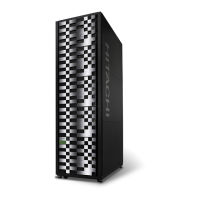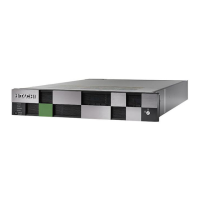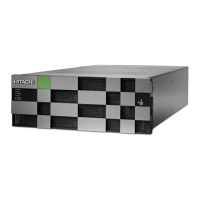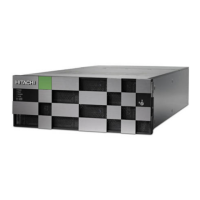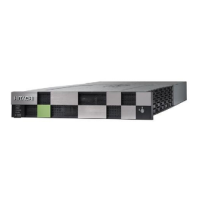Item Description
Description Data is written to multiple disks successively in units of block (or
blocks). Parity data is gener
ated fr
om data of multiple blocks and
written to disk.
Advantage
RAID 5 supports tr
ansaction operations that mainly use small size
random access because each disk can receive I/O instructions
independently. It can provide high reliability and usability at a
comparatively low cost by virtue of the parity data.
Disadvantage Write penalty of RAID 5 is larger than that of RAID 1 because pre-
update data and pre-update parity data must be read internally as the
parity data is updated when data is updated.
Item Description
Description Two or four parity groups (eight drives) are concatenated. The data is
distributed and arranged in 16 drives or 32 drives.
Advantage If a RAID 5 (3D+1P) parity group becomes a performance bottleneck,
you might improve performance through the added drives in a RAID 5
(7D+1P) conguration.
Disadvantage The impact when two drives are blocked is signicant because twice
or four times the numbers of LDEVs are arranged in the parity group
when compared with RAID 5 (3D+1P). However, the chance that the
read of the single block in the parity group cannot be performed due
to failure is the same as that of RAID 5 (3D+1P).
RAID 5
Chapter 3: Hardware architecture
Hitachi Virtual Storage Platform G1000, G1500, and VSP F1500 Hardware Guide 64
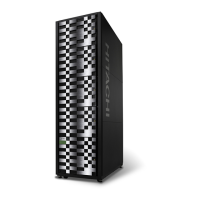
